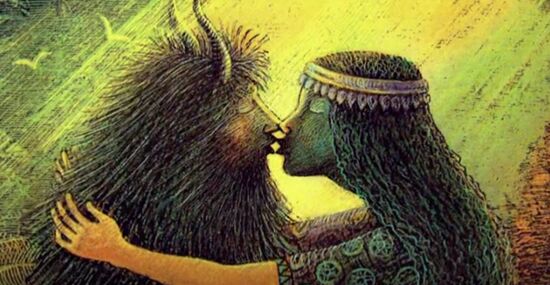The Plot and Structure of Gilgamesh
The Epic of Gilgamesh weaves a captivating tale that transcends the boundaries of time and culture. Its narrative intricacies, character development, and thematic depth have made it a timeless masterpiece of world literature. In this exploration of the plot and structure of Gilgamesh, we embark on a journey through the epic's distinct narrative arc, encountering mythic quests, profound friendships, and existential reflections that continue to resonate with readers across millennia.
The Plot
The Epic of Gilgamesh exhibits distinct structural features. It consists of several tablets, each containing individual episodes or sections of the narrative. These tablets, often found in fragmented form, are numbered and arranged in a specific order to form a coherent story. The narrative follows a linear progression, with each tablet building upon the events and themes established in the previous ones.
The Prologue
Gilgamesh opens with a prologue that introduces the eponymous hero, Gilgamesh, the mighty ruler of Uruk. It establishes his extraordinary strength and godlike qualities, as well as his reputation for arrogance and oppression. The prologue also introduces Enkidu, a wild man created by the gods to be Gilgamesh’s equal and to challenge his excesses. This initial setup sets the stage for the epic’s central themes of heroism, friendship, and the quest for meaning.
The Civilizing of Enkidu

Enkidu, a wild and untamed man, undergoes an important transformative journey. Initiated by Shamhat, a temple prostitute, Enkidu is introduced to the pleasures and complexities of human civilization. Through encounters with Gilgamesh and immersion in the city of Uruk, Enkidu learns social norms, cultural practices, and the values of human society. His friendship with Gilgamesh becomes a guiding force, teaching him loyalty, trust, and the responsibilities of leadership. Enkidu's education shapes his character, transforming him into a compassionate and morally conscious individual. This educational journey explores themes of civilization, personal growth, and the tensions between the natural world and human society.
The Journey of Gilgamesh and Enkidu
The narrative unfolds as Gilgamesh and Enkidu embark on a series of mythic adventures. Initially, the two engage in a fearsome battle, but they ultimately recognize each other’s strength and form a deep bond of friendship. Together, they set out on a quest to defeat Humbaba, the guardian of the Cedar Forest, with the aim of immortalizing their names and achieving eternal glory. This journey symbolizes the heroes' search for purpose, immortality, and the transcendence of mortal limitations.
- See also: “The Taming of Nature in Gilgamesh”
Trials and Temptations
Throughout their journey, Gilgamesh and Enkidu face numerous trials and temptations that test their resolve and character. They encounter the seductive goddess Ishtar, who offers Gilgamesh her hand in marriage but is rejected due to her treacherous nature. The heroes also confront the Bull of Heaven, sent by Ishtar to avenge her wounded pride. These challenges highlight the themes of temptation, divine intervention, and the consequences of defying the gods.
The Death of Enkidu
Tragedy strikes when Enkidu falls gravely ill and eventually succumbs to death. Gilgamesh is devastated by the loss of his beloved friend and embarks on a profound existential quest to understand the nature of life, death, and the afterlife. This section of the epic delves into themes of grief, mortality, and the futility of human endeavors in the face of inevitable death.
Gilgamesh’s Pursuit of Immortality
Driven by grief and a desire to avoid his own mortality, Gilgamesh sets out on a journey to seek eternal life. He encounters Utnapishtim, the only mortal granted immortality by the gods, who tells him the story of the Great Flood and offers him a test to prove his worthiness. Gilgamesh ultimately fails the test, realizing that immortality is reserved for the gods alone. This section explores the themes of human limitations, the acceptance of mortality, and the pursuit of wisdom.
The Return to Uruk
Having come to terms with his mortality, Gilgamesh returns to Uruk with a newfound wisdom and a transformed perspective on life. He reflects on the enduring legacy he can leave behind through his city's achievements, accomplishments, and the stories that will be told of him. The epic concludes with a reflection on the transient nature of human existence and the eternal nature of fame and cultural memory.
Additional Structural Features
The structure of Gilgamesh includes recurring motifs and parallel episodes that enhance the thematic richness of the epic. For example, the motif of the quest for immortality is echoed in both Gilgamesh’s pursuit of eternal life and the story of Utnapishtim surviving the Great Flood. This structural repetition adds depth and complexity to the narrative, allowing for the exploration of diverse perspectives on the central themes of the epic.
Additionally, the inclusion of embedded stories and episodes within the main narrative structure contributes to the epic’s narrative depth and cultural significance. For instance, the story of the Great Flood, reminiscent of the biblical account of Noah’s Ark, is a notable episode that serves as a reflection on divine judgment and the power of the gods.
The poetic style of Gilgamesh, characterized by vivid imagery and rhetorical devices, further enhances its narrative impact. The use of repetition, metaphor, and descriptive language heightens the emotional intensity of the epic and engages the reader’s imagination.
